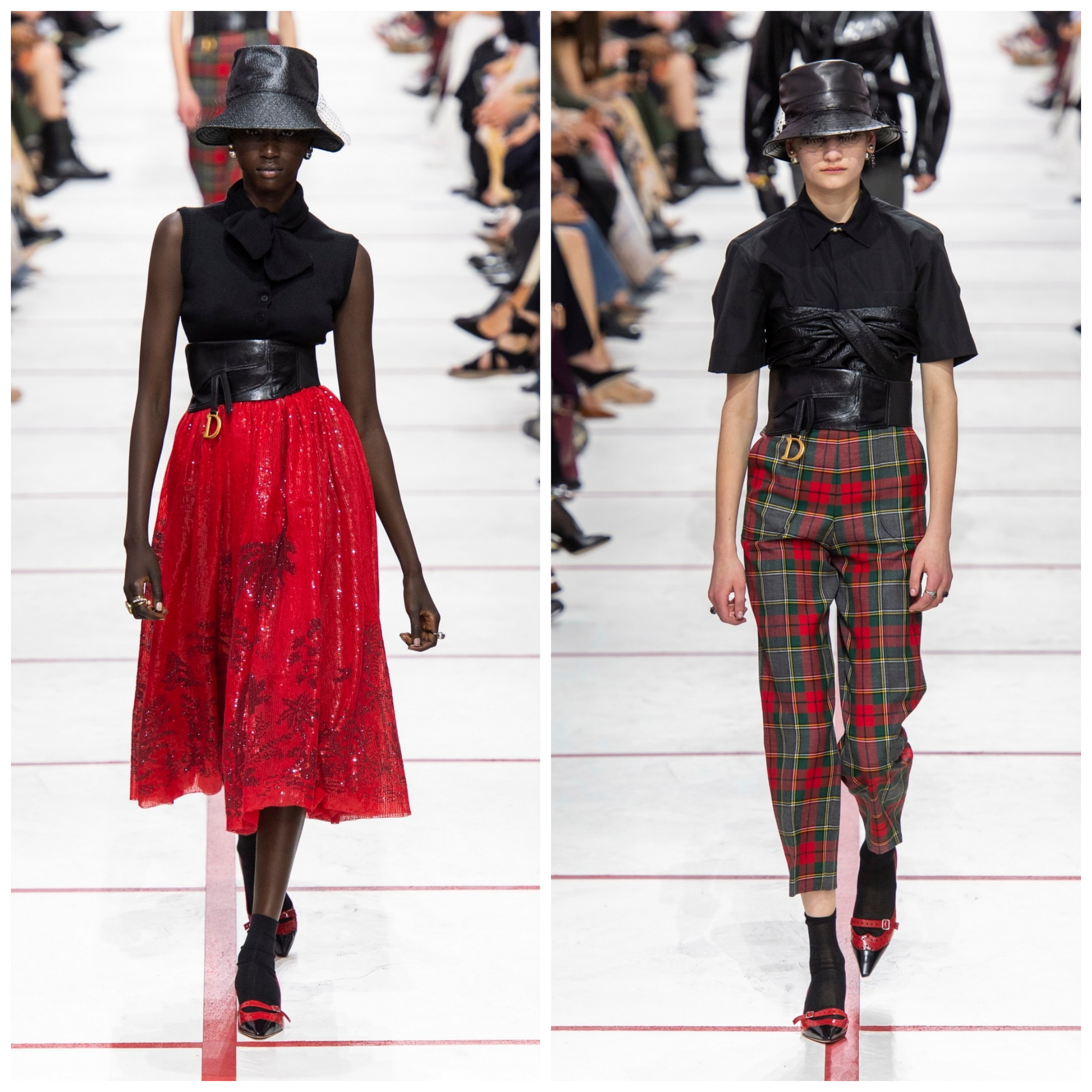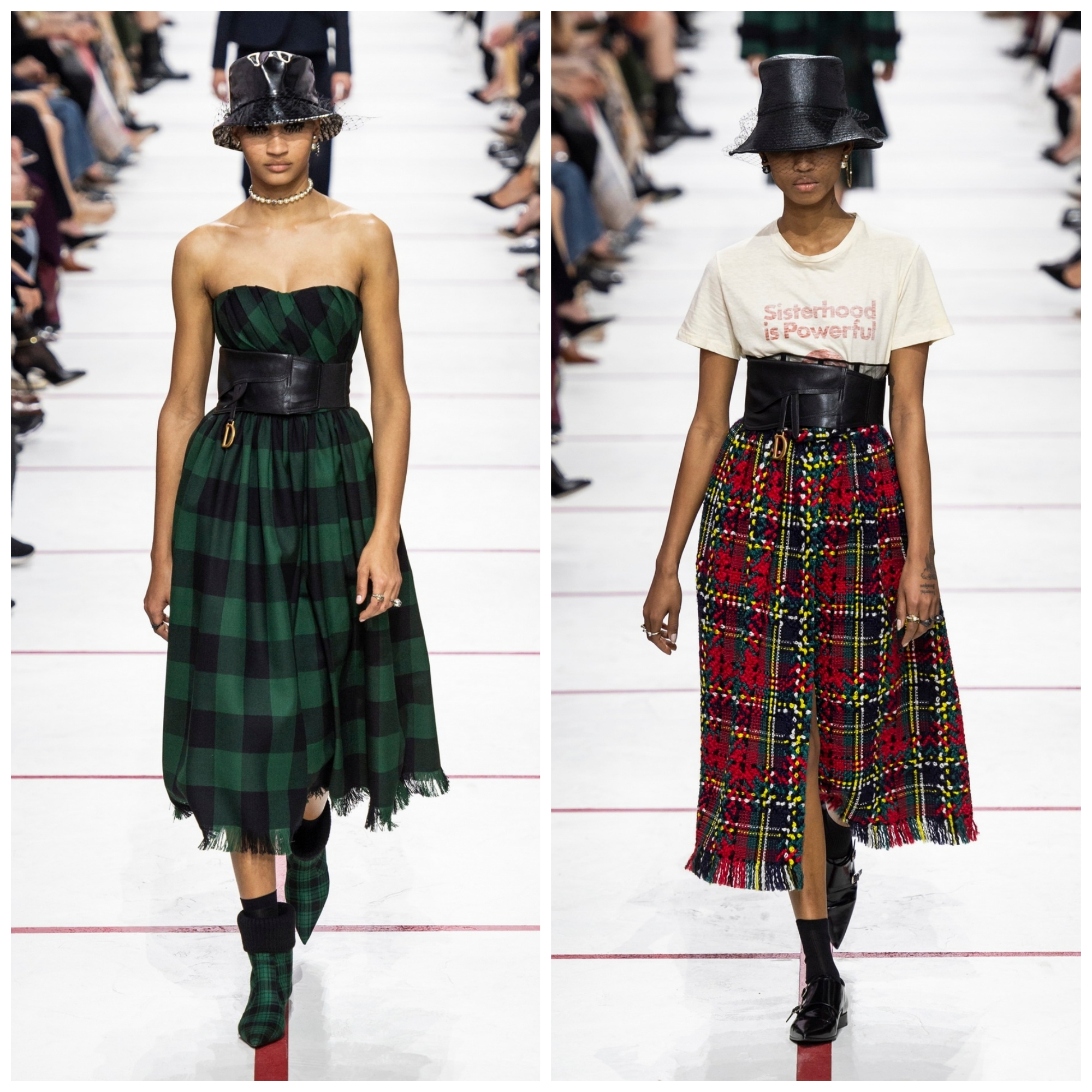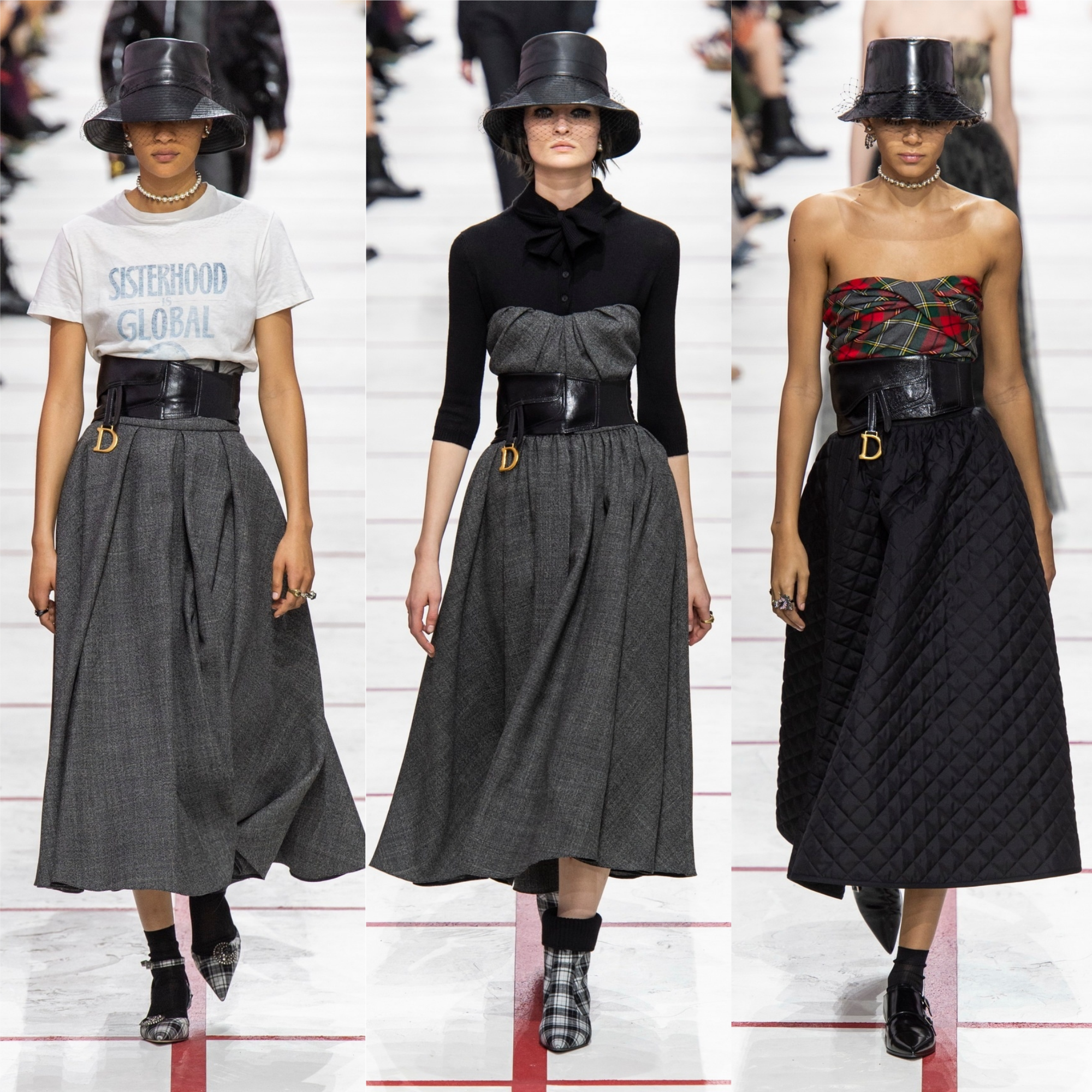Inspired by the work of feminist activist Robin Morgan, Italian artist Tomaso Binga, and the V&A’s Designer of Dreams exhibition, Maria Grazia Chiuri deepened her explorations of identity and reimagined her Dior’s 71-year-history for today. Her autumn/winter 19 collection was a dialogue between feminist thought, house codes and the needs of women in 2019.

We last met Chiuri when she was in London for the opening of the V&A’s Designer of Dreams exhibition last month. “Ultimately, people see Dior, not all the designers that made up Dior,” Chiuri explained modestly as we explored the exhibition. “All of the designers, from Yves to Raf, have in their own way used the reference of the founder and the codes of the house, in their own personal style and reflected their own moment, but if you aren’t a fashion historian or a fashion obsessive, it is difficult to see.” Immersed in a history that has been largely shaped by men, the significance of Maria Grazia Chiuri as the first woman to helm Dior was obvious then and it’s just as obvious now. “Of course, as a woman, I have another point of view,” Chiuri explained. “For me, I don’t want to impose on other women, I want to start a conversation and I want the house to be a place that takes care of women. Fashion can impose certain rules but when I was young and interested in fashion, it was about being free, expressing our own identity.”

It was this sense of freedom and desire to express identity that led her to one of the collection’s inspirations, Teddy Girls, the 50s British girl gang subculture that rebelled against post-war austerity by appropriating Edwardian frills. The Teddy Girls provided a fresh way for Chiuri to revisit a period defined by Christian Dior’s New Look and the subsequent rise of the house. She applied the subculture’s mix of classicism and subversion, elegance and rebellion, to the codes of Dior. So, Chiuri revisited the Bar suit along a more masculine line and contrasted it with skirts in technical fabrics. These same technical fabrics were used to reimagine dresses inspired by Christian Dior’s nipped-waist silhouettes of the 50s, before she applied similarly modern materials and techniques to breathing new life into the Miss Dior dress from 1949. That dress encapsulated the mix of strength and grace that today’s artistic director favours now, so it informed evening dresses composed as bodysuits and embroidered skirts.

Maria Grazia Chiuri has, since her appointment in 2016, continually connected fashion to feminism. She has continually placed fashion directly within the wider discussions around women’s equality, inspiring many other designers to follow her lead. For this autumn/winter show in the gardens of Musée Rodin, Chiuri pushed it even further by inviting the Italian artist Tomaso Binga — a woman who chose a masculine pseudonym in the 70s as a way of parodying the privileges reserved for male artists — to transform the constructed show set box into an ABC of women. Throughout the space, we were confronted with Binga’s naked form spelling out the alphabet. Before Selena Forrest walked out in the first “Sisterhood is Global” slogan T-shirt inspired by feminist activist Robin Morgan, the 88-year-old read out a poem in Italian that talked of a feminist victory against the patriarchy. An apt statement for the first female creative director of this house.

